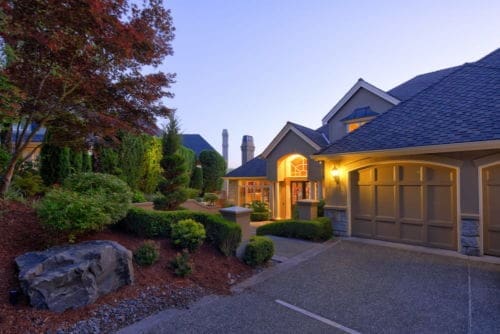Getting a new garage door is a major home improvement project. As such, it’s well worth a homeowner’s while to not only hire a reputable garage door service in San Diego, but to also take the time to learn the basics of the installation process. This helps ensure your installation is done correctly and makes it less likely that key issues will go unnoticed.
So what can you expect from a professional garage door installation? Keep reading for a full walkthrough of the professional installation process.
Is it hard to install a garage door? 
A garage door is a large, heavy piece of equipment. It’s operated by a system of springs and pulleys that can be dangerous if not installed correctly. In addition, the door must be properly aligned in order to function properly.
Garage doors are also subject to wear and tear and may need to be repaired or replaced over time. For these reasons, it is best to leave garage door installation to the professionals.
A professional installer will have the experience and expertise to properly install the door and make sure it’s in good working order. While they work, you can use your precious time to unwind at Ruocco Park or to finish your chores.
Most importantly, a professional will be familiar with local building codes and will be able to ensure that the door meets all safety requirements.
A typical garage door installation includes these steps:
Measure the opening
First, take accurate measurements of the opening. Your contractor may need to take the old doors off first. This is a crucial step, as a door that is too small will be difficult to open and close, and one that is too large won’t fit properly in the opening.
Install the tracks
After the springs and opener have been installed, it’s time to install the tracks. This is a relatively straightforward process, but it’s important to do it carefully in order to ensure that the door operates smoothly.
First, the vertical track is installed at the door’s opening, and then the horizontal track is attached to the ceiling. The tracks should be level with each other and perpendicular to the door opening.
Add the rollers
Your technicians will have to make sure that the rollers are the correct size for your door. They will likely lubricate the rollers and tracks with WD-40 or a similar product before installing them. This will help to reduce friction and keep the door moving smoothly. Finally, they will tighten the screws securely so that the rollers don’t come loose over time.
Hang the sections
Your professional will need to start by attaching each section to the door frame with brackets. Once the brackets are in place, he can then attach the section to the door itself. The hardware that your expert will use will vary depending on the type of garage door that you have, but it is typically either a spring system or a series of pulleys and cables.
Install the springs
Garage door springs help balance the weight of the door and make it easier to lift. There are two types of springs system: torsion springs and extension springs.
Garage door springs can be dangerous, so it’s important to follow the manufacturer’s instructions carefully. This is one of the main reasons why laypeople who are unfamiliar with the correct procedures and terminology should never attempt to perform a DIY garage door installation.
Let’s have a look at the steps:
- secure the spring to the bracket with a vise or clamp
- attach the other end of the spring to the center bracket
- wind the spring using a winding bar until it’s tight
- attach the spring to the track and release the vise or clamp
Who do I call for the most reliable garage door service in San Diego & the surrounding area?
If you’ve decided to install a new door, you can’t go wrong by reaching out to Radford Garage Doors & Gates of San Diego. We’ve been providing quality service to our customers for over 77 years, and we’re proud to say that we’re one of the most reputable companies in the business.
We offer a wide range of services, including replacement of a dying door, maintenance and installation of a man door, as well as custom door design and installation. We understand that your garage is an important part of your home, and we’ll do everything we can to make sure it’s operating as it should.
Contact us today to schedule a free consultation, and find out why we are one of the leading professionals in garage door repairs.












San Diego:
9185 Chesapeake Dr.
San Diego, CA 92123
(858) 925-2700
Mission Viejo:
27281 Las Ramblas, Suite 200,
Mission Viejo, CA 92691
(949) 749-7665
Email:
info@radforddoors.com
Google Rating
4.9